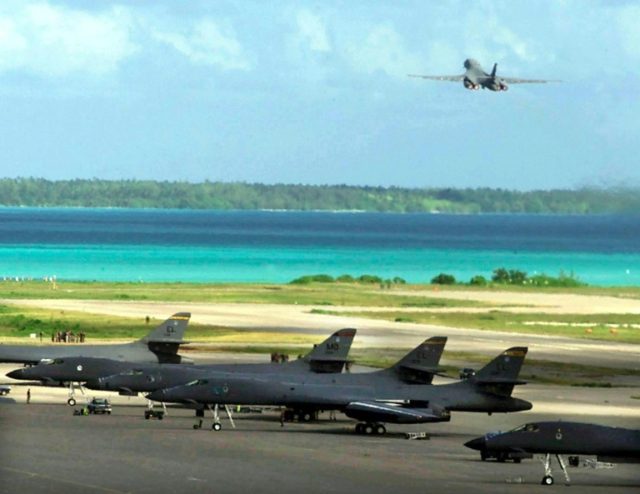The U.S. government dropped a record 5,213 bombs on jihadis in Afghanistan this year, according to a report published Wednesday.
According to U.S. government and independent assessments, terrorists, mainly the Taliban, control more territory now than during any other time since the Afghanistan war began more than 17 years ago, in October 2001.
That means the record number of U.S. military airstrikes in Afghanistan this year failed to prevent the ongoing advance of jihadis in the country.
The U.S. Inspector General for Afghanistan Reconstruction (SIGAR) reported that Afghan jihadis control over Afghanistan reached the “highest level” this year since the watchdog agency began keeping track in November 2015.
SIGAR recently determined that Afghan terrorists control or contest 45 percent of the country.
The Afghan government’s control and influence over the country fell to 55 percent, which SIGAR suggested to be the “lowest level” since the conflict started.
Kabul continued to lose territory this year to the Taliban and other terrorist groups in Afghanistan even though U.S. President Donald Trump’s administration intensified America’s air campaign in the country this year, launching more airstrikes than during the peak of the war in 2010.
“U.S. has never dropped as many bombs on the country as it did this year. … Previously, the most munitions were dropped in 2010 – 5,101. That was a busy year for coalition forces with Operation Moshtarak the largest offensive operation of the war up to that point,” Statista reported, citing U.S. Air Force Central Command data.
According to Pentagon figures, 2010 was the deadliest year (497 deaths) for U.S. military troops in Afghanistan.
Statista attributed the historic increase in bombs dropped in Afghanistan this year primarily “to a change in the rules of engagement which allows coalition forces to open fire on the enemy without having to be in close contact with them. The change was orchestrated by Secretary of Defense Jim Mattis who wanted to remove such restrictions in order to use air power to its full potential and defeat the enemy.”
After former U.S. President Barack Obama declared that American troops had ceased their combat mission in Afghanistan at the end of 2014, the U.S. military was only authorized to shoot at the Taliban after they attacked, from a defensive position, the top commander of American and NATO forces in Afghanistan at the time told lawmakers.
While the number of bombs dropped by the U.S. military has increased dramatically under Trump, the number of fatalities incurred by American service members has fallen significantly.
The vast majority of the U.S. military deaths and injuries took place under Obama’s watch.
Since Trump became president, the U.S. military has dropped about 9,574 bombs, including 4,361 bombs in 2017 and 5,213 so far this year.
“The change [in rules of engagement], combined with more air strikes by the Afghan Air Force, has also led to a spike in civilian deaths,” Statista noted.
In October, the United Nations reported that the Taliban and to a lesser extent ISIS are responsible for the majority of civilian deaths and injuries.
Last August, President Trump announced a new Afghan strategy that involved boosting the number of American troops in the country to 14,000 after his predecessor pulled out nearly all the U.S. forces.
The Trump administration has made “reconciliation” between Kabul and the Afghan Taliban the primary goal of its strategy. In recent months, the U.S. has intensified efforts to pressure the Taliban to negotiate an end to the war, which is more than 17 years old.


COMMENTS
Please let us know if you're having issues with commenting.